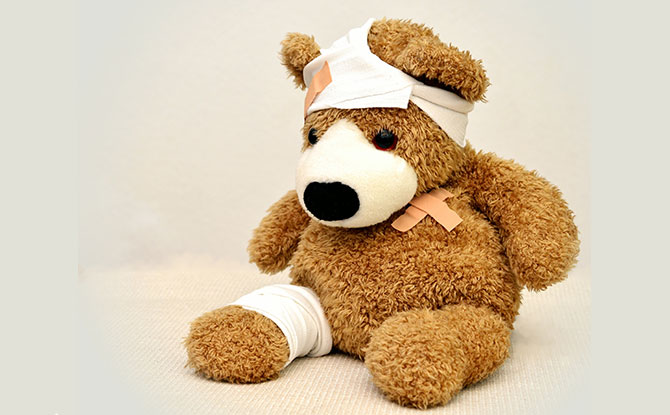
As kids explore the world around them, they will inevitably get a few cuts and bruises along the way. This can happen anywhere – whether at home, in school or at the playground – and at any time.
There are many myths and misconceptions about how to treat a wound or a cut. They range from blowing on it to using sea water to wash a cut.
So, what should you do when your child comes to you with a scrape or cut? Is it okay to just ignore it? Or will a kiss make the pain go away? With the right know-how, you can face these scenarios with confidence and get your kid feeling all better again.
Here are five things that parents need to know about wounds and how to treat them.
Essential Things Parents Should Know About Wounds
1. Even minor wounds can get infected
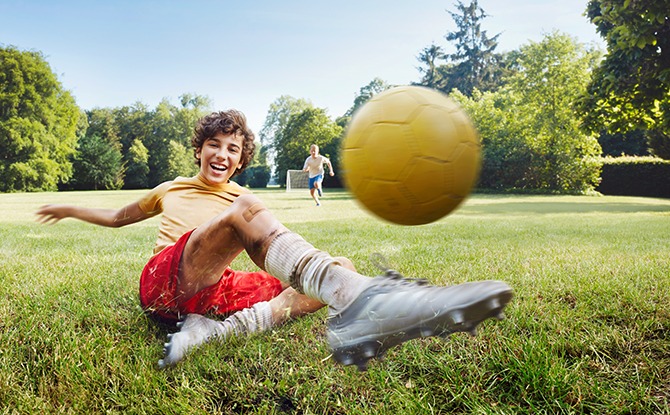
Children are prone to various types of wounds. These include cuts, abrasions, burns and scratches. When such wounds occur, the surface of the skin is broken.
Skin serves as a barrier is to protect the body against infections. When skin barrier is damaged or broken, dirt and bacteria can enter in through the wound and infect the body. Regardless of how small a wound is, it can lead to infections. Wound infections are among the most common cause of sepsis, or a severe reaction to an infection that can be potentially life-threatening.
Therefore, even small wounds should not be taken lightly. And, very often, taking easy-to-do steps, such as putting on a plaster, can be effective in preventing a small cut from becoming a bigger problem.
2. Top priority is to stop the bleeding
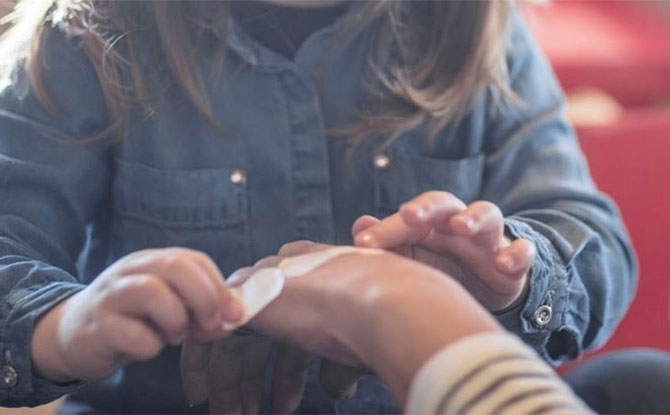
The first step in tending to any wound is to stop the bleeding. Once the bleeding has stopped, treatments applied to the wound would be more effective.
To stop the bleeding, you should take a sterile piece of gauze or a clean cloth and apply pressure to the site. If needed, you can also elevate the site of the wound to reduce the blood flow.
Do clean or remove any visible foreign objects from the wound before applying pressure in order to prevent the debris from being further embedded into the wound.
3. Always clean and disinfect the wound
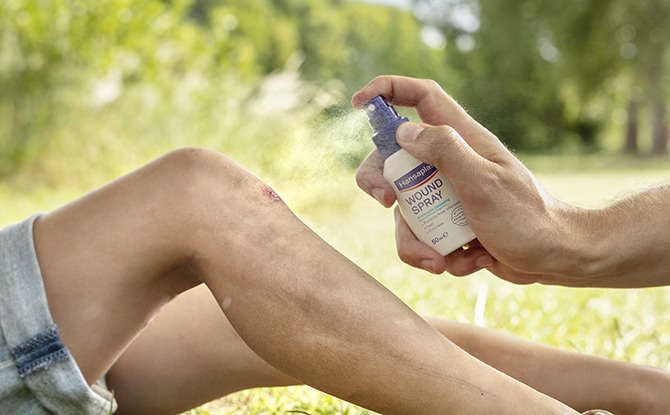
When it comes to cleaning a wound, many people turn to tap water. However, tap water is not germ-free and its quality is location dependant. It can pick up bacteria as it flows through the pipes to the tap.
Another misconception is that rubbing alcohol is suitable for cleaning wounds. However, this isn’t. When applied on wounds, alcohol creates a burning sensation. It also destroys living skin cells along with the bacteria, thereby slowing down the healing process.
Seawater is not recommended either. Impurities in seawater can result in a high concentrations of germs. Seawater can also cause the skin around the wound to swell, allowing bacteria to enter the wound and increasing the risk of infection.
A clean and cleansed wound is the first step to an optimal healing. Experts recommend the use of wound cleansing solutions such as the Hansaplast Wound Spray to prevent infections.
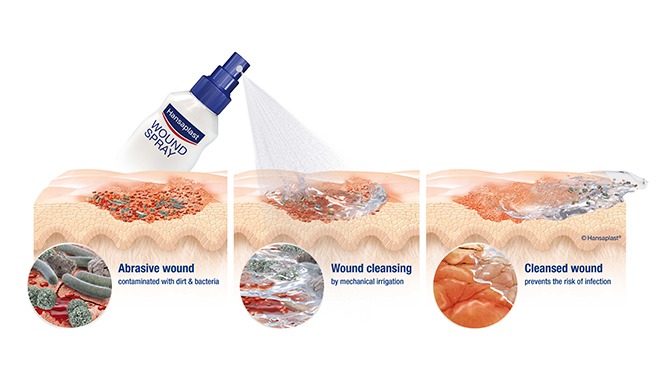
Hansaplast Wound Spray is an antiseptic solution that can be used to clean acute wounds like cuts, burns, abrasions, 1st degree and minor 2nd degree burns and open blisters. It can also be used for chronic wounds and post-operative wound care as per your doctor’s instruction.
Suitable for children and sensitive skin, Hansaplast Wound Spray is skin-friendly, free of alcohol and does not cause stinging or dry the skin. It comes in a spray bottle that works at any angle, making it easy to apply in different situations and to reach different wound locations.
4. Protect the wound from dirt and bacteria
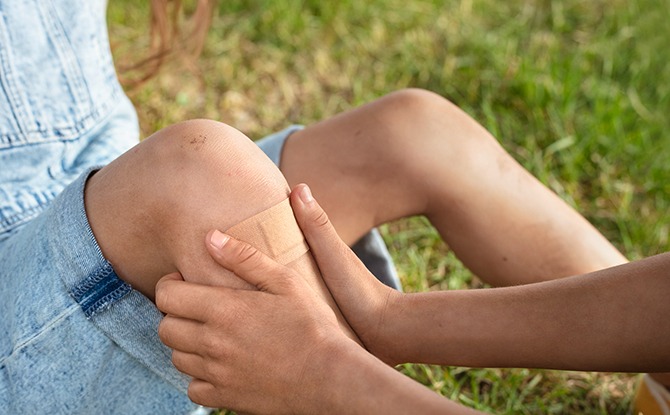
Once a wound has been cleaned, it should be protected to allow it to heal properly. Thus, after cleaning the wound, even if it is a small scrape or graze, it is advisable to apply a plaster to the injured area to protect the wound from external influences such as water, dirt and bacteria.
A common myth is that wounds heal better when exposed to air. However, the truth is that you should use a plaster to cover up a wound. Research has shown that covered wounds heal more efficiently and have a lower risk of infection. The plaster protects and cushions the sensitive wound tissue from accidental contact or pressure, taking over important protective functions and supports the healing process until the damaged skin has regenerated.
With nearly 100 years experience of pioneering wound care, Hansaplast has relaunched its range of wound plasters to enable people to feel cared for and protected as they get on with their daily lives.
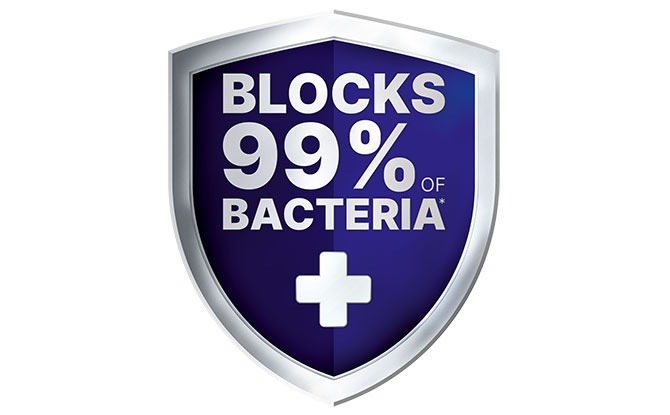
The entire Bacteria Shield plaster range blocks 99% of bacteria from contact with the wound, protecting against dirt and bacteria. This protects the wound and helps avoid infections so the body’s natural healing mechanisms can do their work unhindered.
Good to know, considering that even minor cuts and scrapes can lead to infections that can worsen and spread to other parts of the body, causing serious health issues. Hansaplast Bacteria Shield plasters help create optimal conditions for wounds to heal without complications, significantly reducing stress and worries.
Hansaplast plasters are durable and come in a variety of designs and sizes. This makes it easy to find a suitable one to protect any wound that you may encounter. Kids will especially love Hansaplast’s colourful Disney and Marvel plasters. Plus, there are hypoallergenic plasters for those with sensitive skin.
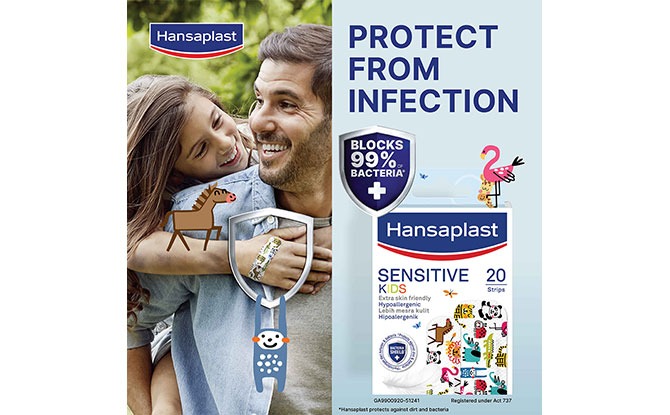
Hansaplast has also introduced a new plaster specially developed for gentleness on children’s sensitive skin and easy, painless removal. Hansaplast KIDS SENSITIVE plaster strips are hypoallergenic, with dermatologically approved skin compatibility.
Geared specifically toward the needs of little ones after a mishap, they also feature cheerful cartoon animal motifs that are sure to distract teary kids. When children come running in tears after a scrape at the playground, KIDS SENSITIVE plasters can put them at ease and turn their tears into smiles.
5. Healing can be sped up with wound ointments
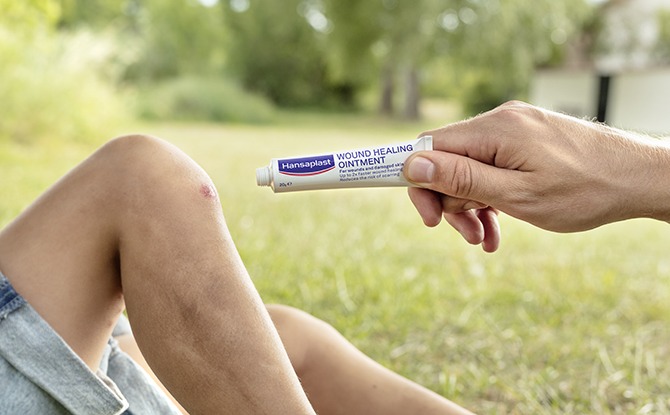
Most people associate scabs with a wound that is healing well.
Scabs are formed when red blood cells, fibrin and platelets clot over a wound which has been left to dry in the air. However, a scab can make it hard for a wound to close and is prone to leaving behind a scar once it falls away.
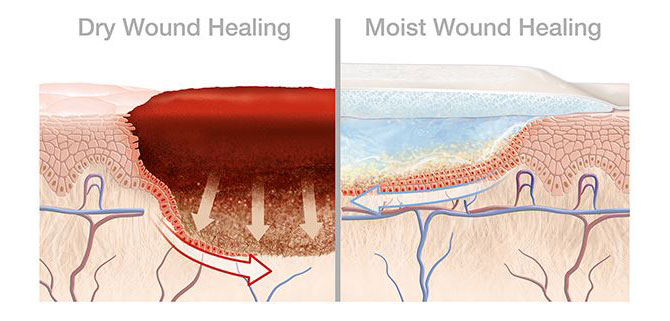
An alternative to leaving a cut or abrasion to heal in dry conditions is to create a moist healing environment for the wound. Moist wound healing does not result in a formation of a scab and reduces the possibility of scarring.
The conditions for moist wound healing can be achieved through the use of a wound healing ointment along with a plaster. Wound healing ointments prevent the formation of a crust while creating a micro environment that encourages faster wound healing.
Hansaplast Wound Healing Ointment can be applied regularly until the wound has healed completely. It has been clinically proven to promote faster wound healing and reduce the risk of scarring or infection.
Its gentle formula is suitable for babies, children and those with sensitive skin.
Stop the Bleeding, Clean, Protect & Heal
So, the next time your child comes to you with a cut or abrasion, don’t just ignore it. Take the following steps for optimal wound care:
Stop the Bleeding: Apply pressure or compression to the wound area.
Clean: Use an antiseptic spray to clean the wound.
Protect: Apply a plaster to cover up the wound to prevent it from being infected.
Heal: Use ointment to speed up healing and reduce the risk of scarring.
Hansaplast is a trusted brand that has been around for nearly 100 years, even introducing the first patented adhesive wound plaster in 1882. Its products that will give you the confidence to tackle common everyday injuries that you and your family members will encounter.
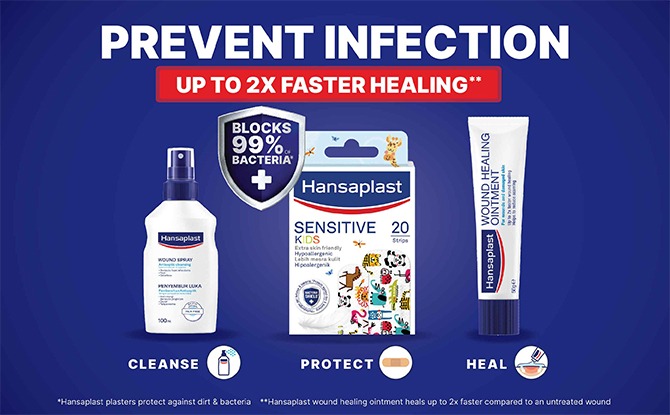
Hansaplast’s products are available online and at retail stores all around Singapore, such as Guardian, Watsons and FairPrice.
Learn more about Hansaplast’s products here.
*Hansaplast plasters protect against dirt & bacteria.
This feature is brought to you by Hansaplast.




















